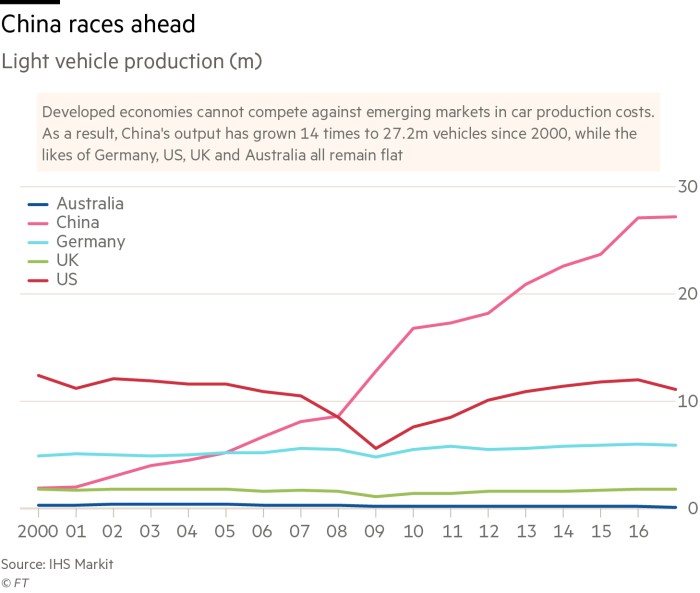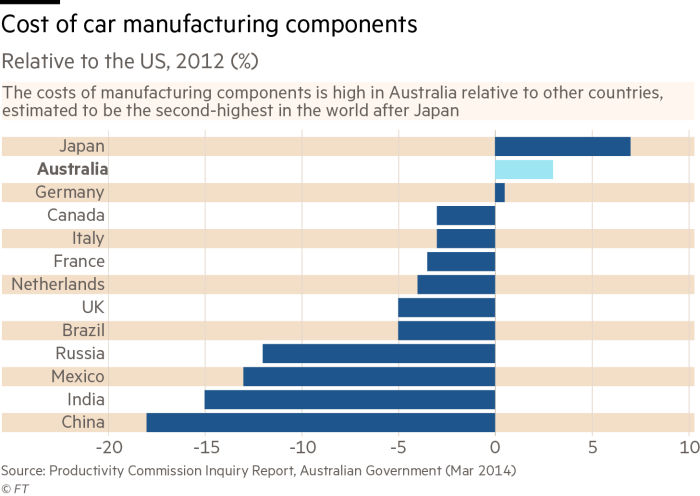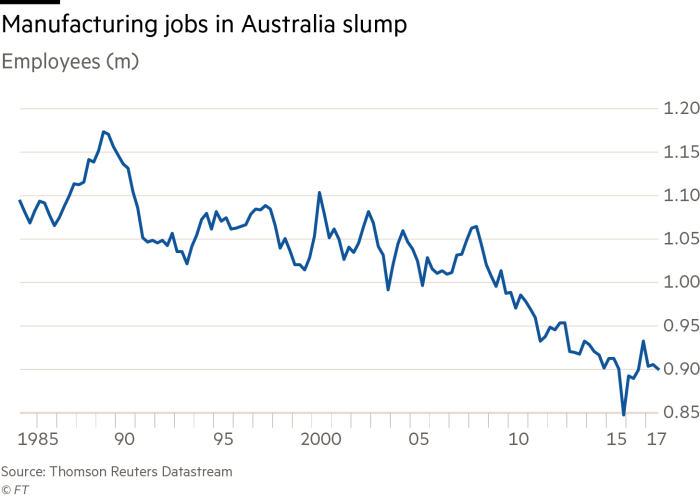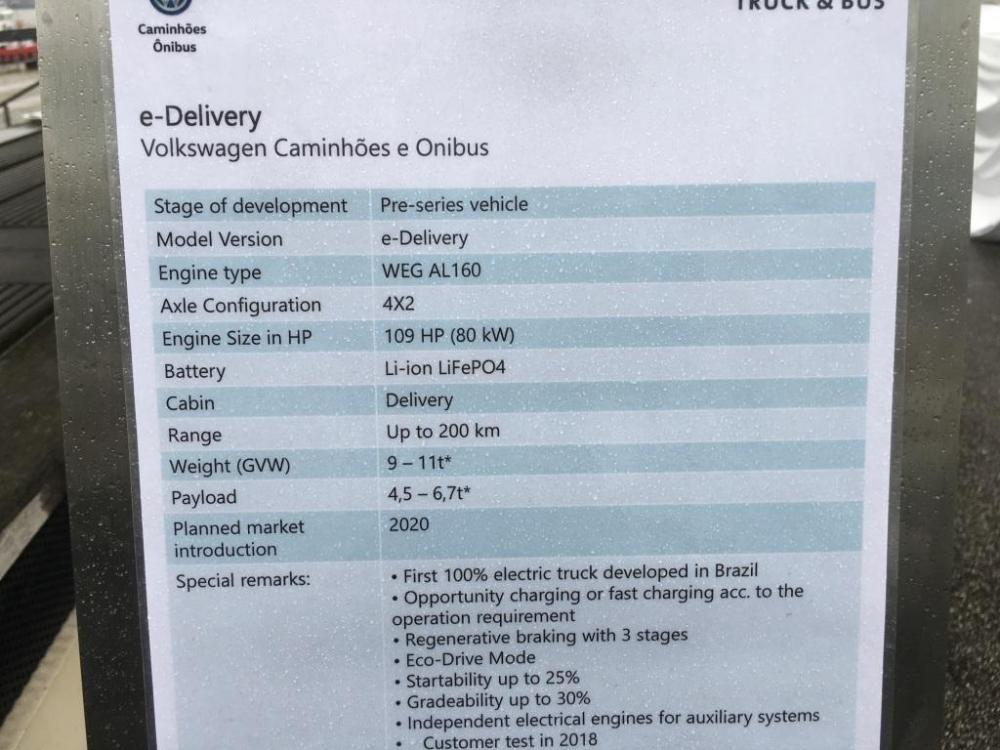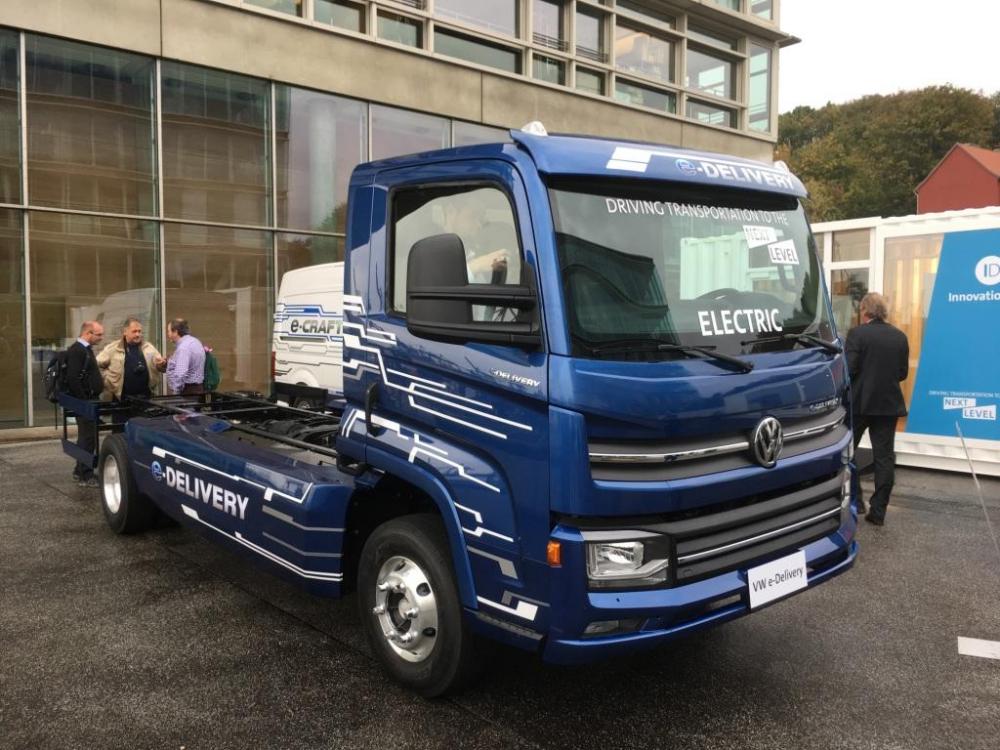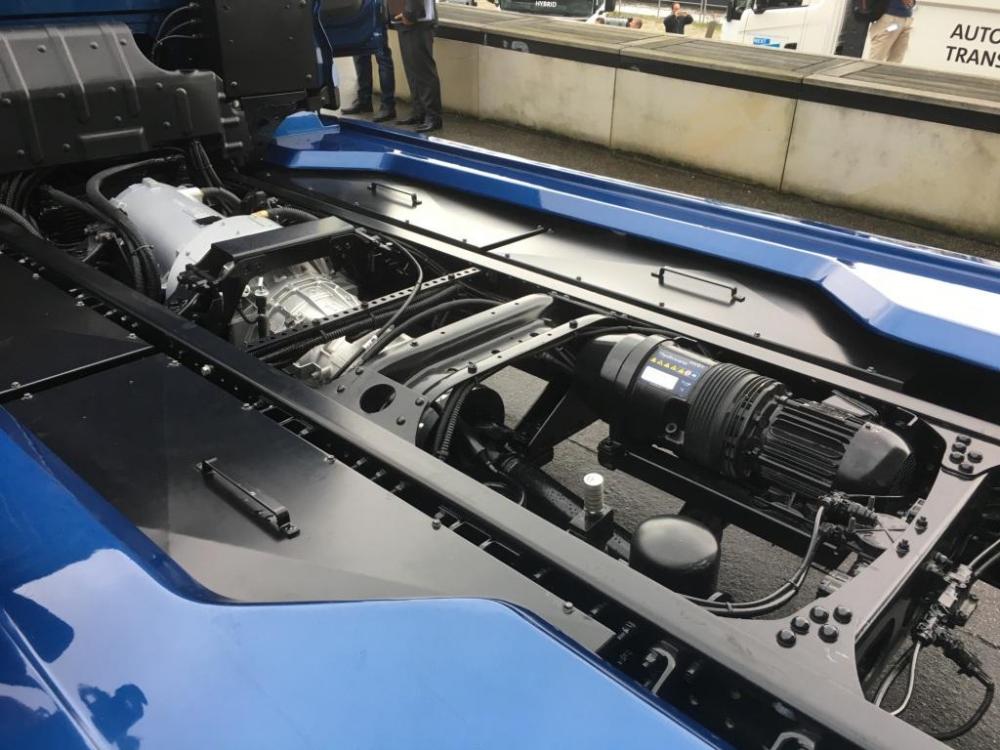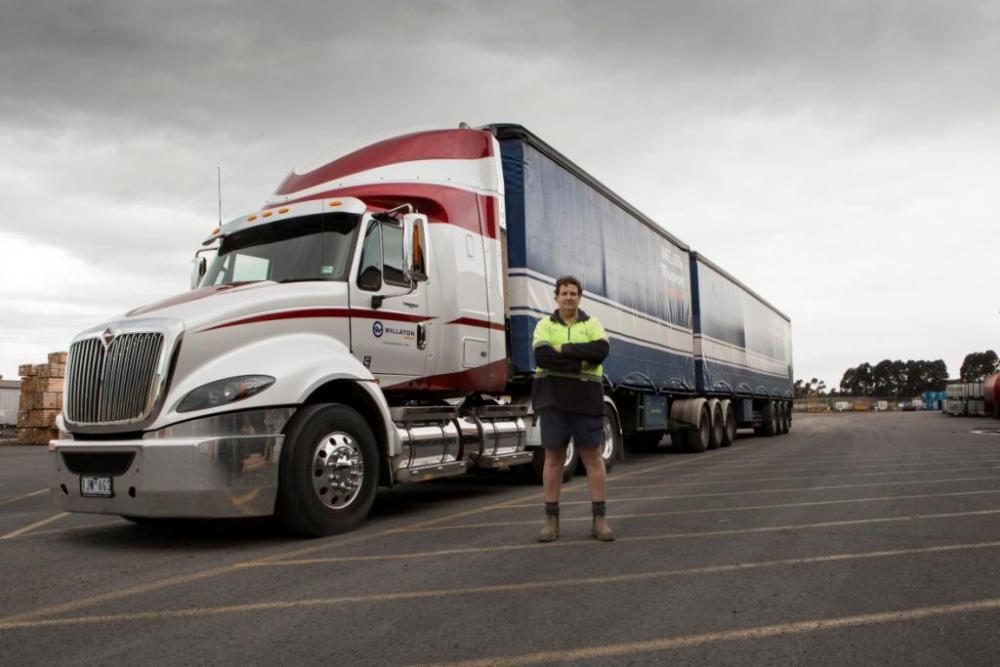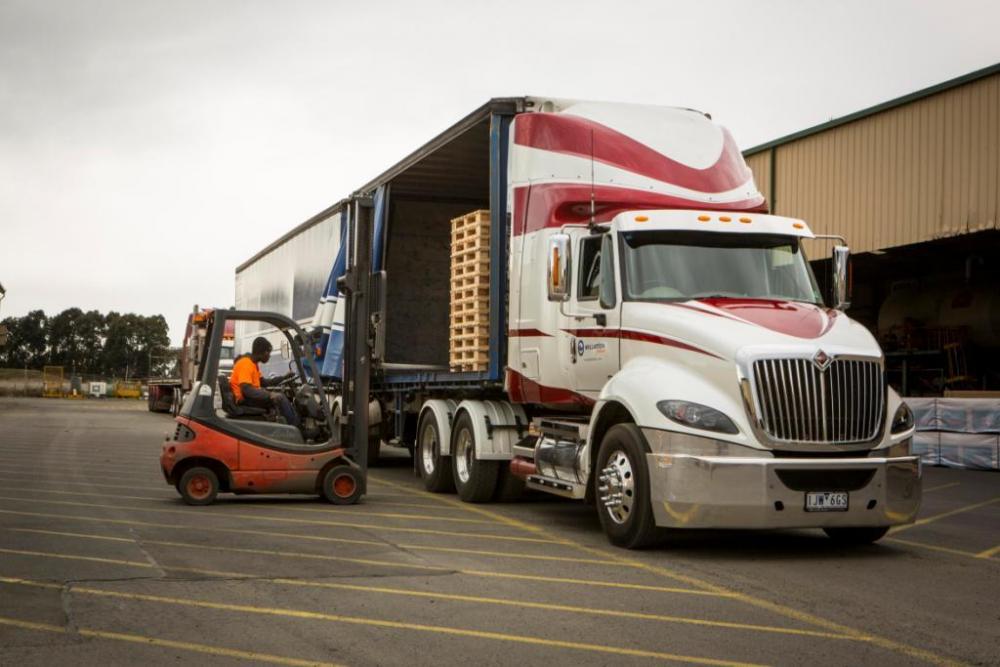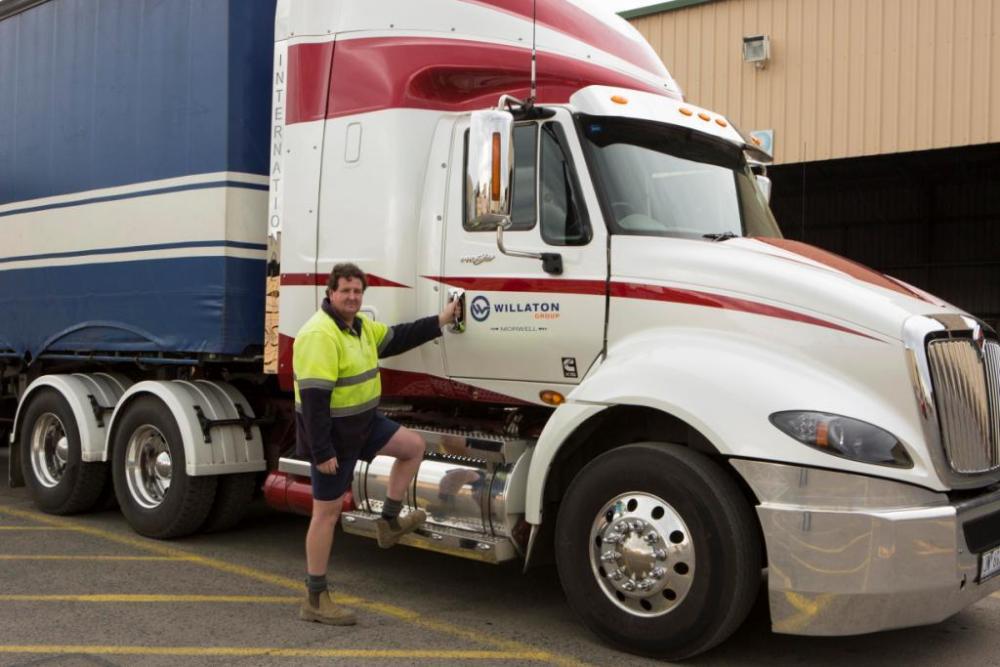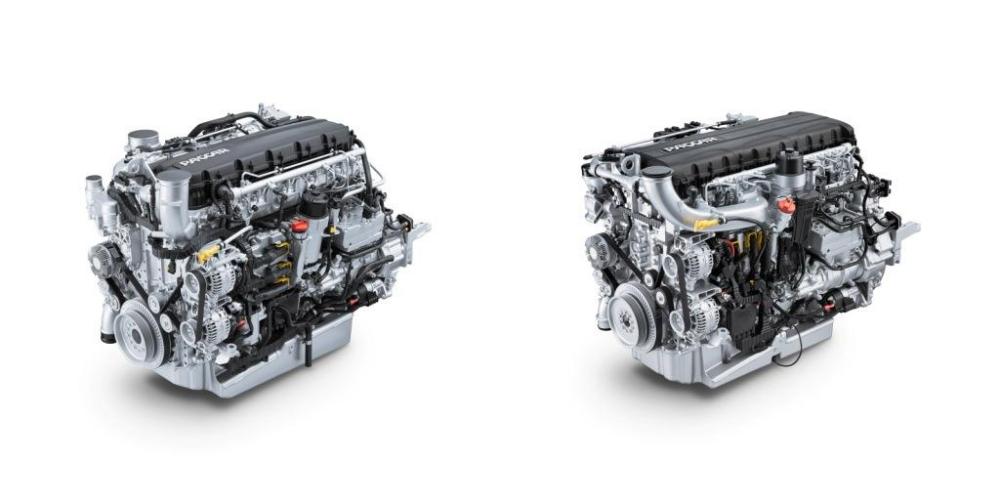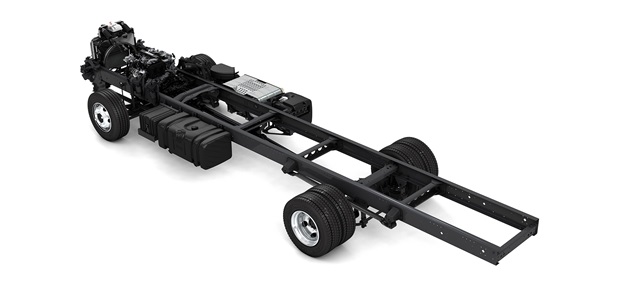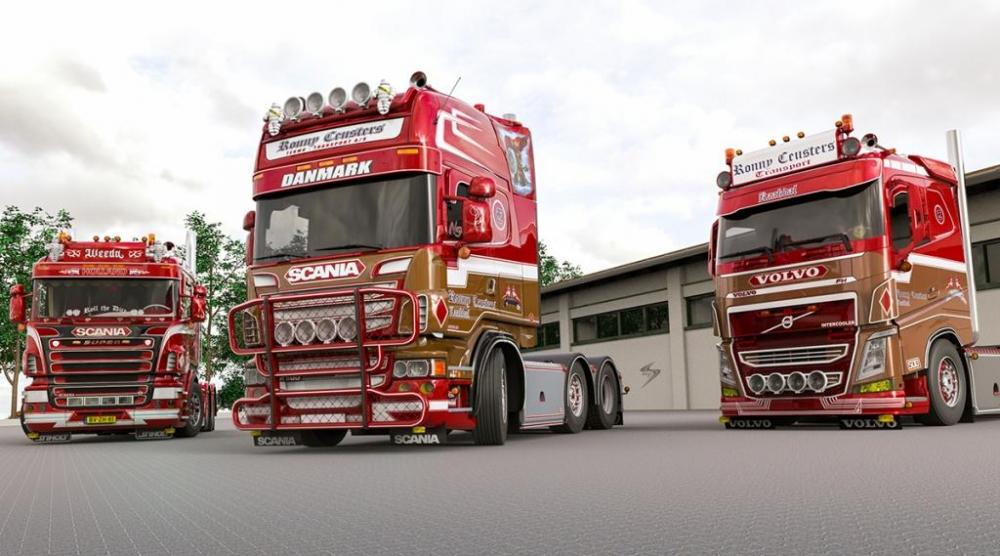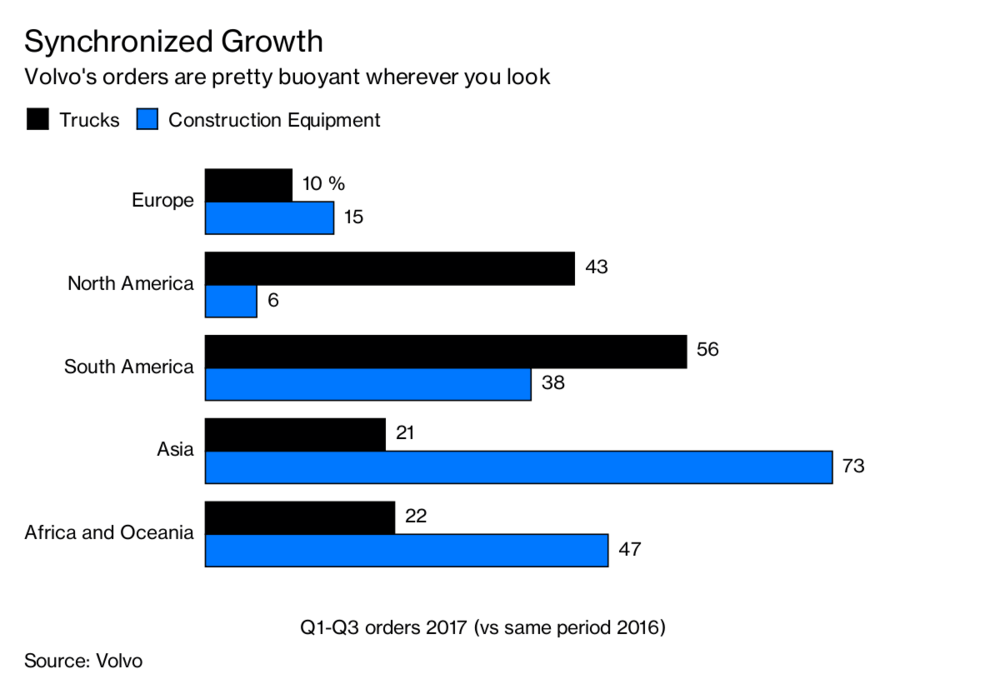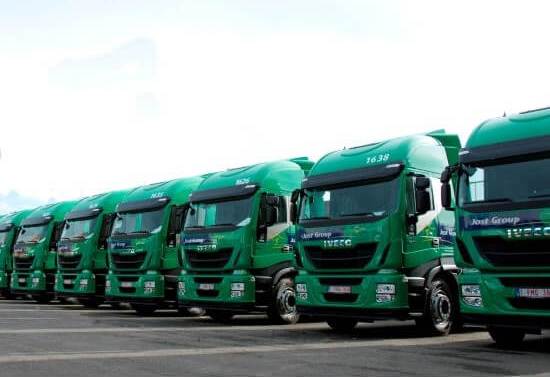
kscarbel2
Moderator-
Posts
17,893 -
Joined
-
Days Won
86
Content Type
Profiles
Forums
Gallery
Events
Blogs
BMT Wiki
Collections
Store
Everything posted by kscarbel2
-
You're 500 percent right Paul. But let me update you that China is no longer a low cost production location. Those days are over. There's plenty of foreign plants there but most only produce for domestic consumption due to protectionist government policies, and again, the fact that the current higher production costs there don't make the product price competitive for export. Places like Thailand and Vietnam, for example, have replaced China as attractive low cost production locations for the global market. I don't knock China and India for their protectionist policies. They rarely kowtow to big business, as in the US and Australia. They realize that a strong domestic economy ensures a strong country (i.e. the US 50 years ago). I'll tell you a quick story. China agreed to buy MIcrosoft XP operating system software years ago for all their government computers, and then Microsoft announced they would end XP support in 2014. In big business-run America, the government was silent. But China told Bill Gates directly that if they ceased support of XP, they would never buy another Microsoft product again, and would make selling in China (the world's largest market) a nightmare for him. The result was, Microsoft quietly flip-flopped and still today provides security updates for XP in year 2017.
-
You're right Paul. In June, I posted: Over a 15 year period between 1995 and 2014, there were 3,158 terrorism-related deaths in the United States. But in 2015 alone, the FBI says Americans murdered 15,696 fellow Americans. Terrorists of all factions needn't bother with the US, as we're doing a far better job than they could ever dream of killing ourselves. Looking at the numbers, radical islamists murders are a niche problem. There's now a far greater need to watch your back in the supermarket parking lot, at the gas station, that remote summer campground, or................ Set aside the talk of protecting ourselves from a handful of radical islamists for a moment, and tell me how we're going to protect ourselves from dangerous fellow Americans, and illegal aliens including gangs like MS-13? They dress like us.....you can't spot them until it's too late. Trump says Chicago is more dangerous than Afghanistan.......which puts Detroit on the same scale as Somalia. If I was president for a day.............
-
Holden brand will live on Financial Times / October 21, 2017 General Motors may have stopped making cars in Australia but it is retaining design and engineering teams and the Holden brand — one of the oldest in the global automobile industry, writes Jamie Smyth. “Holden’s lion and stone emblem is an iconic brand in Australia,” says Richard Ferlazzo, GM Australia’s design director. “We will still be selling Holden’s here. It’s just they will be sourced from other global GM plants.” Holden’s next generation of Commodore, due to be launched next year in Australia, will be sourced from factories in Germany. The company plans to release a total of 24 car models by 2020, which the company says highlights its commitment to the brand. “In today’s environment, it doesn’t make sense to manufacture here but it certainly makes sense to design cars in Australia,” says Mr Ferlazzo, who heads a team of 100 designers. “The smarts and skills are already here and we have good links with universities.” Holden was founded by James Alexander Holden, a saddle maker in Adelaide in 1856. The company diversified into coaches and built its first car body a century ago. In 1931 GM acquired the company, which began manufacturing the first Australian-designed car in 1948. Generations of Australians have grown up with the Holden brand, which once commanded almost half of all car sales. But the brand has suffered from cut-throat foreign competition and in 2016 sold just 94,308 cars — one of its worst results on record equating to a market share of 8 per cent. Holden’s team will work with half a dozen other GM teams in Brazil, US, China and South Korea to design commercial vehicles and other transport solutions. It will also partner with GM’s Detroit design team to develop futuristic concept and show cars for global auto shows. “Australia has high standards in industrial design, which is why the carmakers are retaining operations here when manufacturing ceases,” says Roy Green, dean at University Technology Sydney business school. Ford, which closed its last car assembly plant in Australia last year with the loss of 600 jobs, is also retaining design and engineering teams in Melbourne. This year it is investing A$450m in local research and development, up 50 per cent on 2016. It will have a 2,000 person strong team in Australia, including 1,750 engineers, designers and technicians. Holden’s Melbourne design and engineering teams will be the only GM team, which do not have access to a manufacturing plant in the country. “It’s handy to have production on site but not essential,” says Mr Ferlazzo.
-
Demise of Australian carmaking acts as a warning to rich nations Financial Times / October 21, 2017 General Motors’ unit closure raises questions over manufacturing in developed states A curtain has come down in Australia. General Motors’ Holden subsidiary closed its last major car assembly plant in the country on Friday, bringing to an end a century-old industry that forms the bedrock of Australia’s manufacturing industry. It follows similar decisions by Ford and Toyota to cease local manufacturing as the carmakers failed to cope with reduced tariffs on cheaper Asian imports following the inking of free trade deals that flooded the market with cheap imports. But the problems are not isolated to Australia. It is one of a number of developed economies struggling to compete as global car manufacturing increasingly shifts to the emerging markets such as Mexico, where the cost of production is lower. The Holden closure raises questions and intensifies the debate over the long-term viability of production in the world’s richest nations. “The global shift in production is one of the consequences of free trade deals between countries with big labour costs differences,” says Felipe Munoz, global automotive analyst at Jato Dynamics. In North America, carmakers are still investing in Mexico, despite the threats by US President Donald Trump against carmakers that shift production out of the US. Audi has begun using the country as the centre for global production of the Q5 premium SUV, while BMW is also opening a plant to produce 3-series sedans for the global market there. Toyota will also move production of the Corolla to Mexico, while General Motors is expanding its plants in the country. Ford had planned to make its next Focus model in Mexico, although it has shifted production to China. Volvo, which is owned by China’s Geely, also uses China as a global export base for the S90 saloon. In Europe, there has been a flurry of investment by Jaguar Land Rover, Volkswagen and Mercedes-owner Daimler in car plants in central and eastern nations Slovakia and Poland, where manufacturing costs are a fraction of those in Germany and the UK. Manufacturing in high-cost countries such as Australia “only really makes sense when you have an export hub,” says George Galliers, an auto analyst at Evercore ISI. Nations such as the UK and Germany are dependent on exports — close to 80 per cent of cars made in both countries are sold abroad. This emphasis on exports puts the focus on free trade agreements, FTAs, which proponents of Brexit in the UK have cited as a way to open doors to selling the country’s cars to nations such as the US and China. But in Australia, where a free trade deal with Thailand saw the market flooded with cheaper cars, and the US, there is more negative and hostile mood over the benefits of free trade agreements. More than any other, the Nafta agreement between the US, Mexico and Canada highlights the perils of FTAs for the developed countries. Nafta helped the Mexican car manufacturing sector boom from a cottage industry to a global powerhouse in two decades. But for the US, it saw jobs drain away to the cheaper south. This pressure on jobs prompted Mr Trump to call Nafta the “worst deal in history” and also led to the US pulling out of the Trans-Pacific Partnership — a deal between 12 nations that border the ocean including Japan and America. “It is crucial that an FTA actually works for businesses in practice,” says Jessica Gladstone, a London-based partner at law firm Clifford Chance. “For without careful consideration, a deal could leave significant non-tariff barriers in place, which could see the benefits negotiated being neutralised altogether." Since Canberra signed a free trade deal with Bangkok in 2005, Australian consumers have bought 2.26m vehicles imported from Thailand, according to Australia’s Federal Chamber of Automotive Industries. Yet when Holden and Ford attempted to export Australian-made cars to Thailand, they complained they often faced hidden non-tariff barriers that made exports unsustainable. “The Thai free trade deal was a one way agreement. It didn’t provide a level playing field to our car manufacturers,” says Paul Bastian, national secretary of the Australian Manufacturing Workers' Union. Although a flood of cheap cars undoubtedly gave more people access to cars, a move with potential benefits to the wider economy, the measure took its toll on the industry, and car production halved between 2004 and 2012 to about 220,000 vehicles — Toyota 100,000, Holden 80,000 and Ford 40,000. Scrapping high tariffs on imports also created a hyper-competitive domestic car market, where 67 brands sold 350 models in 2014 in a market with 1.1m annual sales worth A$40bn. This was more than in either the US, where sales were 17m, or China, with 23m sales in the same year. “Competition is intensifying,” says Roy Green, dean at University of Technology Sydney’s business school. “Thailand is already a powerhouse in Asia and is absorbing almost all of Toyota’s Australian production. China is a new emerging global powerhouse.” He says for carmakers to survive in high cost economies they need to embed a high level of robotics and automation in operations; fully integrate into global markets and supply chains; be able to customise products for individual customers; and provide world-class design. The rising use of robots may help to tip the balance back in favour of developed countries, says Dr Sam Luttrell, an Australia-based partner at law firm Clifford Chance. “The car industry is one of the most heavily automated industries in the world,” he says. “Robots perform most of the major steps in the production line. When robots do the work, wage costs start to be replaced by electricity bills.” That will be little comfort to the final 900 workers at Holden’s Adelaide assembly plant or others in the industrial world where aggressive cost competition is having a similar impact. “It is very rare to lose an entire industry and the demise of the auto industry in Australia is a salutary warning to other nations about what can happen if you are ambivalent about the industry,” says John Spoehr, director of the Industrial Transformation Institute at FlindersUniversity. “It consolidates elsewhere.” .
-
VW to Roll Out Electric Trucks, Buses in $1.7 Billion Project
kscarbel2 replied to kscarbel2's topic in Trucking News
Volkswagen's New E-Delivery Electric Truck Will Go On Sale In 2020 Car Scoops / October 11, 2017 Volkswagen took the opportunity to unveil the new E-Delivery during the 2017 Truck & Bus Innovation Day. Developed by Volkswagen Caminhoes e Onibus in Brazil, it's described as a modern truck aimed at urban logistics, and as its name suggests, it has a zero-emission powertrain. The electric motor, which is backed up by a lithium-ion battery pack, feeds 109PS (107hp) to the two-wheel drive system, with its total driving range said to be up to 200km (124miles). Volkswagen says that their first electric truck developed in Brazil also features regenerative braking, with 3 stages, and an Eco-Drive Mode, meant to help it achieve its driving range. However, despite looking ready for assembly, the new Volkswagen E-Delivery is actually a pre-series production vehicle. Customer testing will begin next year, and if all goes as planned, then expect to see the first units on the roads starting in 2020. VW are optimistic when it comes to this zero-emission light truck, as they're expecting a "strong customer demand". VW says the E-Delivery is aimed at the global market. . -
IVECO Trucks Australia / October 13, 2017 Although orders are now being taken for the INTERNATIONAL ProStar at IVECO Dealerships around the country, there has been no let-up in the model’s ongoing testing regime, with one ProStar having just completed a six month / 110,000 kilometre stint with Willaton Transport Group. The prime mover was integrated into Willaton’s 70-strong fleet and assigned to 34-pallet B-Double work, operating from the company’s Morwell, Victoria, depot to Sydney return, via the Monaro Highway, a notoriously demanding stretch of road. INTERNATIONAL Engineering Manager, Adrian Wright, said the engineering team had sought to find a difficult route for the truck, to really test the vehicle’s capabilities. “The trip north from Morwell to Sydney along the Monaro takes in a lot of undulating terrain, the trucks really have to work hard for a lot of the journey,” Adrian said. “Data loggers were fitted to the ProStar and periodically checked, providing us with a very accurate and thorough overall evaluation of the truck’s performance. Driver feedback from Willaton’s Transport was also recorded. “The testing and feedback was extremely positive and prospective buyers of the ProStar should know that all of our extensive pre-launch and ongoing local testing is confirming that the model will perform well in the most demanding of applications.” Willaton Transport Director and Operations Manager, Bernie Willaton, said he was impressed with the ProStar’s performance. “When you have a truck that can integrate into the broader fleet and you don’t hear about it for the whole evaluation period, you know it’s doing really well,” Bernie said. “Ninety per cent of the time it was working as a B-Double, hauling a range of general freight at about 64 tonnes, it did what it had to do with no fuss – that’s what you want from a truck.” According to Bernie, the truck was extremely well finished and totally reliable even to the smallest detail. “There was not one rattle or squeak in the ProStar and I couldn’t believe how good the electrics were – after six months not one cabin light, head light or instrument cluster light had gone.” Running the familiar Cummins 550hp engine and Eaton Roadranger combination – an industry standard in many applications – Bernie was aware of the bulletproof nature of this specification, but what did surprise him was the ProStar’s remarkable fuel efficiency. “The telematics data was indicating an average fuel performance of 1.9 litres per kilometre and we run our trucks at the 100 kilometres per hour speed limit, not under,” he said. “I was very impressed with how little fuel it used, there’s a lot to be said about the ProStar’s aerodynamics.” Bernie said he thought the ProStarwould gain good acceptance in the market. “I can definitely see applications where the ProStarwould be a great fit – it’s a good, honest truck that will get the job done,” he said. “My driver would have kept it.” On this occasion, that was not an option for this particular truck as it’s slated to return to the engineering workshop to become the test bed for future driveline enhancements. It will be back on the highway before long though as part of INTERNATIONAL’s on-going test and development program. .
-
trucktvaustralia / October 11, 2017 The full video interview with Hans Jensen and his express freight International complete with 361 cubic inch V8...you'd never turn the radio on with noise like this! .
-
Eaton’s new Endurant transmission - Don’t call it an AMT
kscarbel2 replied to kscarbel2's topic in Trucking News
. . . . -
Paul, this causes me to recall my July 9, 2016 post. With Ferguson, based on what we're told, a bully/drug dealer/criminal was made a martyr rather than identified for what he was. ---------------------------------------------------------------------------------- The cultural decay and declining standards of behavior in America. That is the situation before us. Frankly speaking, I love my country. And thus, I have been saddened for many years as I watch decay and decline. I am not alone. The events taking place in American society today are shocking.......and shameful. The definition of “socially acceptable morals and values” is clear to any ordinarily prudent individual. However, unlike the automobile and truck which have “evolved forward”, from primitive machines into the highly sophisticated ones we know today, American society appears to be “regressing”, moving away from the signature morals and values that for decades defined America, and made our great country the envy of the world. The American government, I feel, inherently bears significant responsibility in guiding the positive forward development of American society. However, I don’t believe the U.S. government has actively tried to influence the forward development of American society since the administration of Dwight D. Eisenhower (1953-1961). Over the last 20 years, we have observed what to us in our youth was unthinkable. Who on this forum in their teenage years would have walked into a school and taken the life of another human being. The thought never crossed our minds. But the minds of recent generations are clearly different, indicating that we as a people and government combined are seriously failing in our responsibility to lead society. We have a responsibility to effectively raise the bar of morals and values for each new generation of Americans. However, and clearly so, society is plunging to a lawless state that in some aspects is already out of control. And yet, our government of the people does not speak of this crisis, nor address it. When tragic events occur, leadership utters politically correct words like "troubling" and "heartbreaking", and then resumes their normal routine. At some point several decades ago, the values that shaped our morals and values stopped being taught to a sizable portion of the masses, and we’re seeing the effects today in the form of senseless tragedies. Our government refuses to speak of (acknowledge) America’s crisis in society, apparently taboo in Washington, and has taken no steps to address it. But today, for the first time, the media (U.S. News and World Report) actually put it in print......"the battle against cultural decay and declining standards of behavior [in America]". I believe this the first time major media has spoken on this taboo subject.. An American society with strong moral principles and values is not an option........it is a necessity to safeguarding our future. America has become unraveled more since Ferguson, when a bully and criminal was shot by police. He wove his own ending (https://www.washingtonpost.com/politics/new-evidence-supports-officers-account-of-shooting-in-ferguson/2014/10/22/cf38c7b4-5964-11e4-bd61-346aee66ba29_story.html). Rather than call a spade a spade, Washington kowtowed to protesters supporting this bully and criminal, protesters unwilling to advocate that "All American Lives Matter". As people crowed that black lives matter, they looted the stores in their own Ferguson and Baltimore neighborhoods. That speaks volumes. Unless you state that “all lives matter”, you’ve lost all credibility with civilized society. Being an American should no longer be a given……..it should be a privilege, because enjoying the fruits of America’s high quality of life……is a privilege. A United States citizen may lose their citizenship if they are convicted for treason, seditious conspiracy, or advocating violent overthrow of the government. It may be time to begin using this path, revoking the citizenship of those whose ethics, morals and values are not acceptable within American society. Why did the media initially fail to state the Dallas gunman was black? When an attacker(s) is white and the victim is black, the press nowadays makes a point of reporting color. For example, the tragic South Carolina church killings. However, when the attackers are black and the victims are white, the media no longer mentions color. Why the double standard? Either stop mentioning color, as people are people regardless of color (all lives matter), or mention color in any circumstance. . .
-
VW Truck & Bus (Brazil) is superb in the Latin American commercial truck market. And of course VW is huge* in Europe's light commercial truck market. Still though, I think there's vast potential to penetrate the market via the MAN sales network. * http://www.volkswagen-commercial-vehicles.com/en/models.html
-
Yes, but a very good move I think.
-
MAN Truck & Bus Press Release / May 11, 2016 Braking and moving-off functions for off-road operation The electronic brake system for off-road operation improves handling in difficult terrain. Besides the paver brake, the hill holder and ASR functions for simplified moving-off as well as ABS for off-road operation for braking on loose surfaces and the turning brake are described here. .
-
Scania Group Press Release / 19 October 2017 The electrification of heavy vehicles is now gathering speed. Simultaneously, Scania is taking major steps in electrification. As a result of Scania’s electrified roadmap, we are proud to exclusively premiere a battery powered electric Scania bus. Hear Anders Folkesson, Director of Product Planning at Scania Buses and Coaches talk about it. .
-
Scania strengthens its bus range for alternative fuels Scania Group Press Release / 19 October 2017 At Busworld in Kortrijk, Belgium, Scania unveils the hybrid Scania Interlink Low Decker and premieres the battery electric Scania Citywide bus. With the addition of hybrid technology, Scania now meets the entire scope of alternatives for suburban and intercity operations. The Scania Interlink Low Decker is presently available for diesel, biodiesel, HVO, CNG/CBG, ethanol and, with the latest addition, hybrid. It complements the Scania Citywide Low Entry Suburban, which is also available for the full range of alternative fuels as well as in a hybrid mode. “The accelerating urban growth in the world is largely rapid suburbanisation rather than expanding city centres. That means longer commuter trips to work and, in fact, suburban public transport presently consumes three times more fuel than city centre transport. Thus, we need a greater focus on finding non-fossil alternatives for these journeys,” says Karin Rådström, Head of Buses and Coaches at Scania. Scania is also premiering its battery electric Scania Citywide Low Floor bus at Busworld. This bus will go on sale in 2018. “Scania has the most comprehensive range with the widest selection of alternative fuels in the market,” says Rådström. “Scania provides operators with an outstanding freedom of choice to, with retained total operating economy, make the necessary shift to more sustainable passenger transport services.” .
-
MAN Truck & Bus at busworld: Solutions for the mobility of tomorrow MAN Truck & Bus Press Release / October 19, 2017 At busworld, in the Belgian city of Kortrijk, MAN and NEOPLAN will be exhibiting state-of-the-art city buses, intercity buses and touring coaches – vehicles that will form the foundation for the mobility of tomorrow. The highlight at the stand is the new MAN Lion’s Coach, which is celebrating its official debut at the fair. Link to full coverage - https://www.corporate.man.eu/en/press-and-media/presscenter/MAN-Truck-and-Bus-at-busworld_-Solutions-for-the-mobility-of-tomorrow--306433.html
-
DAF launches downspeeding power line components at Busworld '17 DAF Trucks Press Release / October 2017 Significantly more fuel-efficient, quieter, more powerful and more comfortable DAF Components introduces significant innovations at Busworld 2017 in Kortrijk, Belgium – downspeeding engines and accompanying axles for buses and coaches. The newly improved PACCAR MX-11 and MX-13 engines are incredibly quiet, providing optimum return at extra-low engine speeds. DAF is also introducing newly developed, extremely fast DAF rear axles, which - in combination with optimised transmissions - delivers exceptionally low fuel consumption and unprecedented travel comfort. DAF introduces downspeeding engines and accompanying axles for buses and coaches - Up to 6% lower fuel consumption - Greater comfort for passengers - Maximum torque available at 900 rpm Significant updates to PACCAR MX-11 and MX-13 engines - Reduced weight - New combustion system, turbo and new valve train - New intelligent pumps for oil, water and steering - More torque delivered at low engine speeds - Higher ratings up to 390 kW/530 hp - Leading engine brake performance New, highly efficient rear axles - Faster ratios - Reduced weight - Lower internal friction To ensure that every drop of fuel is used to maximum effect, DAF has taken a close look at every aspect of the power lines, asking, "how can we lower fuel consumption even further?" for new engines and new rear axles. The ultimate goal is to achieve maximum return, maximum reliability and maximum comfort for minimum costs. Downspeeding The starting point in the development of the new PACCAR MX-11 and MX-13 engines was to reduce speeds (downspeeding) in order to fully optimise fuel consumption. The new generation PACCAR MX-11 and MX-13 deliver their maximum torque from 900 rpm, without compromising performance. This means that it is possible for both the MX-11 and MX-13 to turn at around 1,050 rpm at cruising speed. High torque To ensure plenty of traction and a high level of driving comfort, even at the new, lower engine speeds, the torque on all new engines has been increased by 50 Nm to 200 Nm (depending on the engine type). The rating of almost every engine has also been increased by 10 kW/14 hp to 15 kW/20 hp. Innovations PACCAR MX-11 and MX-13 engines have been enhanced further to enable downspeeding. For both engines, components including engine block, cooling, air inlet, bearings for the crankshaft and pistons, have all been adapted. The combustion process has also been enhanced and the compression ratio increased. In addition, new and even more efficient turbos have been used, meaning that the engine delivers even more torque at low engine speeds while providing more efficient combustion. With a view to maximum efficiency, DAF is using a continuously variable oil pump, as well as a completely new oil module with reduced pressure losses. This newly-developed pump ensures that the oil pressure is always precisely aligned with the engine requirements, saving energy and thus fuel. The same principle also applies to the new continuous variable cooling water and steering pumps, which also help to reduce fuel consumption. Increased rating and torque The new PACCAR MX-11 engine comes with ratings of 220 kW/299 hp, 251 kW/341 hp, 270 kW/367 hp, 300 kW/408 hp and 330 kW/449 hp. The engine torque is 1,350 Nm and 1,500 Nm for the two lightest power lines. The most powerful MX-11 engine variants deliver a torque of 1,900, 2,100 and 2,300 Nm respectively. The ratings for the redesigned PACCAR MX-13 are 315 kW/428 hp, 355kW/483 hp and 390 kW/530 hp, with torque set at 2,300 Nm, 2,500 Nm and 2,600 Nm respectively. DAF engine brake sets benchmark The drive torque and rating of the engine are not the only aspects that are increased. The already leading MX engine brake on both the PACCAR MX-11 and the MX-13 has become even more powerful thanks to innovations on the valve train, including an adjustment to the cam profile. Just like the MX-11, this means the MX-13 now has an engine brake with 'single valve activation', which delivers more braking performance at a lower speed. It goes without saying that both engine brakes offer maximum performance over an extremely wide range of engine speeds. This not only limits wear on the brakes, but also delivers a higher average speed. The braking power of the PACCAR MX-11 is increased by 10% to 340 kW (463 hp). And even more important, the braking torque in the range between 1,200 and 1,500 rpm is increased by 20%. Thanks to these performance levels, DAF Components has set a new benchmark in the 11-litre segment. The engine brake on the MX-13 already delivered unrivalled power at low engine speeds and this has now been further enhanced. Between 1,000 and 1,450 rpm, the new MX-13 engine brake delivers 20% more braking power, peaking at almost 30% at around 1,200 rpm. The maximum braking power equates to 360 kW (490 hp) from 2,100 rpm. EcoMode For maximum fuel efficiency, the MX-11 and MX-13 engines can—in close consultation with the bus or coach builder—also be supplied with an Eco Fuel Mode. This engine setting is primarily aimed at achieving the lowest possible fuel consumption. For example, Eco Fuel Mode ensures that gear changes are made earlier and that the engine responds more moderately to changes in the position of the accelerator pedal. Eco Performance Mode on the other hand is designed for higher performance, making the engine more alert by delaying gear changes slightly and responding more powerfully. Newly developed cruise control The operation of the cruise control system on sloping terrain is also new. Here, Predictive Cruise Control (PCC) not only ensures gentle torque build-up, but also guarantees a faster torque build-up on steep inclines, to keep the road-speed as high as possible without compromising fuel efficiency. Eco Roll and Predictive Cruise Control have also been optimised. In the past, the truck would simply have decelerated just before the top of an incline. Now, the transmission is placed in neutral whenever the mass and speed of the vehicle are sufficient to push it over the incline with the help of kinetic energy. This significantly increases the rolling distances of the bus or coach and, on long routes, can actually more than double the EcoRoll share. Enhanced rear axles The layout of the complete power line is important for optimum vehicle performance and efficiency. For this reason, not only the engine has been fully enhanced, but—as part of DAF Transport Efficiency—so has the rear axle. This serves a dual purpose; to facilitate downspeeding and thus maximise efficiency and also to improve passenger comfort. The weight of the rear axle has also been reduced even more. The efficiency of the rear axle has been increased; not only by using new tooth profiles, but also by applying a new production process. This has maximised the accuracy of the gear wheel geometry, allowing friction between the individual gear wheels as well as the noise level to be minimised. DAF also uses an oil with a lower viscosity for both rear axles to reduce friction in the differential. Finally, rear axles benefit from newly-developed low-friction wheel bearings, which also deliver lower fuel consumption. Sustainable fuels for a lower CO2 footprint Sustainable fuels that ensure a lower CO2 footprint are becoming available in more and more locations. That is why DAF has ensured its PACCAR MX engines can be driven on HVO (the CO2 saving is 80%), BTL (80%) and GTL (5%). PACCAR MX engines can be filled with these paraffin diesels in addition to ordinary diesels, while still maintaining service intervals of up to 200,000 kilometres. DAF Components For decades, DAF has held a prominent position internationally for buses and coaches as a key partner of independent coach and bus manufacturers. DAF Components provides a complete range of Euro 6 engines; the PACCAR MX-11 and MX-13, including rear axle. All PACCAR engines distinguish themselves by low fuel consumption, optimum reliability and long service intervals for the highest vehicle availability and the maximum yield per kilometre. The same applies to the popular 9.2-litre PACCAR PR and 12.9-litre PACCAR MX engines, which are supplied for Euro 3, Euro 4 and Euro 5 emission standards. LF chassis module for compact buses The DAF Components range also includes the chassis from the DAF LF distribution truck, which forms an ideal basis for 30- to 40-seat PSVs. DAF supplies this chassis with a wheel base of 3.05 to 6.70 metres and with 4.5-litre PACCAR PX-5 four-cylinder and 6.7-litre PACCAR PX-7 six-cylinder Euro 6 engines – including ratings of 112 kW/152 hp to 239 kW/320 hp. The DAF LF chassis module is ideal for manufacturing a wide range of vehicles, ranging from compact midi buses to luxurious VIP coaches. Full service for optimum efficiency For optimum efficiency, it is important that a bus or coach is kept on the road as much as possible. Operators of buses or coaches featuring a PACCAR engine can call on the assistance of more than 1,000 DAF service points located across Europe and beyond, of which 200 are specially appointed as 'DAF Coach & Bus dealers'. These dealers are located along major routes for passenger travel and are fully equipped to provide services for systems that are specific to buses and coaches. DAF's International Coach Service is also ready to provide its services 24 hours a day, and DAF dealers offer repair and maintenance contracts for maximum reassurance before the journey commences. .
-
Chris Bryant, Bloomberg / October 20, 2017 It’s rare that major economies all grow at the same time. For investors that’s sometimes frustrating. There’s always at least one country—Brazil, Russia, wherever—blotting a multinational’s otherwise decent set of numbers. Not anymore. The Organisation for Economic Cooperation and Development says global economic momentum has picked up, in part due to increased business investment, with the upturn synchronized across the big economies. Industrial companies are starting to see the benefit. Take VolvoAB. Its third-quarter update was a sea of green. Truck and construction equipment orders rose 32% and 45% respectively in the three-month period (compared to a year earlier). Encouragingly, that growth comes not just from China but is much more broadly based. “Market demand is strong,” Martin Lundstedt, Volvo’s chief executive, said, noting that even the long-suffering Brazilian heavy duty truck market is bottoming out. Daimler AG’s truck business is roaring ahead too. Its sales rose 30% in the third quarter, with increases in previously tough markets such as Indonesia, India, Turkey and Brazil. Volvo’s truck orders have been so good that its supply chain is struggling to keep up, leading to extra cost for things like express delivery and overtime. Not that shareholders care too much about that: The stock surged almost 7%. When Volvo’s products are selling well, it means the global economy is probably doing OK too. Investors shouldn’t be the only ones starting their weekend on a more optimistic note. True, there was a dip in North American construction equipment orders in the third quarter but management explained that was due largely to the introduction of new products a year ago (hence a tough comparison). .
-
Volvo shares hit record as earnings top forecasts on surging truck demand Reuters / October 20, 2017 STOCKHOLM - Sweden’s AB Volvo reported a bigger-than-expected rise in quarterly core earnings on Friday as stronger demand for heavy trucks more than offset costs stemming from strains on its supply chain, sending its shares to a record high. Sweden’s biggest manufacturer by sales also raised its outlook for truck markets on both sides of the North Atlantic this year and forecast a further strong recovery in sales of commercial vehicles in North America in 2018. “These are blow-out numbers,” said analyst Hampus Engellau at Handelsbanken Capital Markets, which rates the stock “buy”. Shares in Volvo rose 7.0 percent by 0800 GMT, leaving the stock up 56 percent so far this year. Volvo and rivals in the truck industry such as Germany’s Daimler and Volkswagen have hit a sweet spot this year, with rising or already robust demand in all major commercial vehicles markets. The broad upturn in demand was also in evidence in Daimler’s quarterly results, also released on Friday, with a double-digit rise in deliveries and a 32 percent jump in earnings at its trucks division. Yet the buoyant demand has also come at a cost, with pressured supply chains leading components maker SAF-Holland to scale back its 2017 margin outlook this month, while Volvo’s profitability was dented in the second quarter. CONTINUOUS IMPROVEMENT Volvo said stretched components supply had continued to have an impact in the third quarter, but with a 13 percent rise in truck deliveries and sharply higher earnings in its construction equipment arm, this was shrugged off. CEO Martin Lundstedt, a former boss at rival Scania, said the bottlenecks that had mainly hit European truck manufacturing had eased somewhat in recent months, along with supplies of components for powertrains, or engines and axles. “Still there is obviously a high level of pressure in the supply chain, but if you look through the quarter and after the vacation period it has been a continuous improvement, and we continue to see that,” Lundstedt told a news conference. Volvo’s adjusted third-quarter operating profit rose to 7.02 billion Swedish crowns ($861 million) from 4.85 billion a year before, beating a mean forecast of 6.20 billion seen in a poll of analysts. ”There are really no negatives here,“ Engellau said. ”Construction Equipment is really strong and the trucks business continues to deliver in a seasonally weak quarter. “Also order intake is extremely strong and it seems demand will accelerate even further ahead.” Volvo has begun reaping the benefits of a 10 billion crown cost-cutting drive and in August set a target to reach its highest profitability since the sale of its car making arm to Ford (F.N) nearly two decades ago. Gothenburg-based Volvo said order intake of trucks at the group, which also includes brands such as Mack, Renault and UD Trucks, grew 32 percent in the quarter, beating the 15 percent rise seen by analysts.
-
IVECO Trucks Press Release / October 20, 2017 One of Europe’s largest transport and logistics companies places major deal for IVECO’s natural gas-powered heavy trucks – confirming its confidence in Liquefied Natural Gas (LNG) to replace diesel IVECO has secured the largest deal for Stralis NP vehicles to-date, with 500 new trucks set to enter operation with the pan-European transport and logistics specialist, Jost Group. Designed to be the most sustainable long-distance heavy truck ever manufactured, the new deliveries will run on LNG – widely regarded as the only currently available mass market alternative to diesel. The 500 Stralis NP trucks powered by LNG will offer an excellent power-to-weight ratio, power density and quietness of operation. The first 150 vehicles will enter operation during 2018, with the full fleet to be in service by 2020. They will replace 4 to 5 years old diesel-powered vehicles in the Belgian firm’s fleet of 1,400 trucks and 3,000 trailers, which has grown steadily following a series of acquisitions. The company already operates 132 Stralis vehicles, including two running on compressed natural gas (CNG). Commenting on the agreement, Roland Jost, Owner of Jost Group, says: “This marks a key turning point for our business as we begin a strategic move away from our dependence on diesel and towards green logistics, as requested by our customers, which are demanding a more sustainable transport. Our excellent experience operating Stralis Euro 5 EEV diesel vehicles has seen us establish a solid relationship with IVECO, supported by a very strong service network across Belgium. “This played a key role in our decision to take the next step on the path to sustainability, choosing the IVECO Stralis NP as the best solution. We’re proud to be amongst the early adopters of this new technology: our goal for the next three years is to have 35% of our fleet running on LNG. Our Group is also supporting this with an investment in our own LNG refueling infrastructure, with plans to open up to three filling stations within our major operating centres in Belgium.” Pierre Lahutte, IVECO Brand President, explains: “Gas offers the widest range of opportunities to replace diesel in the commercial vehicle market – it's no longer a fuel of tomorrow, it's a fuel of today. This has been firmly demonstrated with one of Europe’s biggest fleets selecting the Stralis NP, running on LNG, to lead their fleet replacement programme. Jost Group has clear sustainability goals, and recognises the benefits that our advanced experience in natural power vehicles can bring to its operation. We are extremely pleased to be growing our share of their fleet, and introducing the Stralis NP and LNG into their operations.” Demand for LNG is growing rapidly across Europe, with the German Ministry of Transport and Digital Infrastructure (BMVI) having identified LNG as the best solution for long-distance road transport in the short term and for the next 10 to 15 years. When running on fossil derived natural gas, the Stralis NP’s CO2 emissions are up to 10% lower than its diesel equivalent, depending on mission and gas composition – rising to up to 95% lower with the use of biomethane. With IVECO’s natural gas technology, the level of particulates are negligible and the NOx 50% lower compared to diesel over long haul missions. It is also much quieter, reducing engine noise levels by around 50% – aiding deliveries in urban areas. IVECO was the first manufacturer in the world of commercial transport to recognise, in 1991, the potential of natural gas – foresight that saw the company develop a full range of natural gas-powered trucks, vans and buses. Today, more than 22,000 IVECO gas-powered vehicles have been sold. Jost Group is a family business employing more than 2,800 members of staff, with offices spanning 10 countries in Europe and North Africa. It offers full, partial and bulk loads, including dry freight and temperature controlled cargos, plus the movement of containers, dangerous goods and waste. Jost Group is also the international key-partner in inter-modality, in air & sea freight and warehouse logistics, with its 300.000m2 of interconnected warehouses. .
-
DAF Trucks: PCC Predictive cruise Control and Predictive Shift
kscarbel2 replied to kscarbel2's topic in Trucking News
BigMackTrucks.com
BigMackTrucks.com is a support forum for antique, classic and modern Mack Trucks! The forum is owned and maintained by Watt's Truck Center, Inc. an independent, full service Mack dealer. The forums are not affiliated with Mack Trucks, Inc.
Our Vendors and Advertisers
Thank you for your support!



